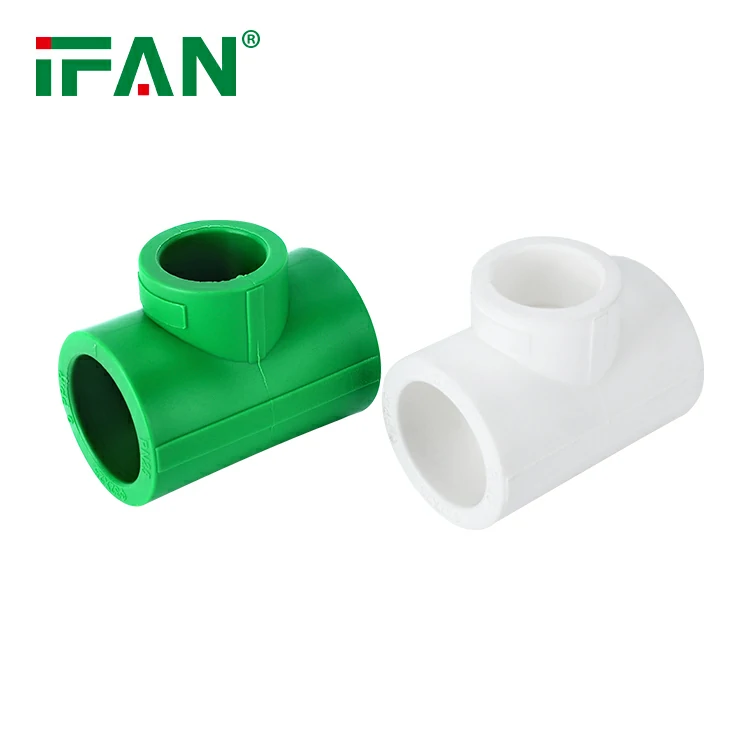Introduction
The plumbing industry is experiencing a quiet revolution as PPR fittings hit the market across global regions. With an increasing demand for efficient, cost-effective, and long-lasting water supply systems, PPR fitting technology is proving to be a game-changer in both residential and commercial construction.
PPR (Polypropylene Random Copolymer) fittings are not just a trend—they represent a shift toward better material science, cleaner installations, and sustainable infrastructure. In this article, we explore the reasons behind their growing popularity, their key benefits, and what makes them stand out in today’s market.

What Are PPR Fittings?
PPR fittings are components used to connect, join, and extend PPR piping systems. They are made from a type of plastic known as Polypropylene Random Copolymer, which is known for its high resistance to heat, pressure, and chemical reactions.
Typical PPR fittings include:
- Elbows
- Tees
- Couplings
- Reducers
- Union connectors
- Valves with metal inserts
These fittings are used primarily for hot and cold water systems, central heating systems, and industrial fluid pipelines.
Why Are PPR Fittings Gaining Market Attention?
1. Superior Performance
PPR fittings can withstand high temperatures (up to 95°C) and high pressure, making them suitable for demanding applications such as solar water heating and central heating.
2. Seamless Fusion Technology
Unlike traditional metal or PVC systems, PPR fittings are joined using heat fusion, creating a leak-free, homogenous connection. This means fewer failures and lower maintenance costs.
3. Chemical and Corrosion Resistance
PPR is immune to most chemicals, does not rust, and does not support microbial growth—making it ideal for both potable water and industrial fluids.
4. Cost-Effective Over Time
While PPR systems may require specialized installation tools, their longevity and zero-maintenance characteristics result in lower lifetime costs than metal piping systems.
5. Lightweight and Easy to Install
The lightweight nature of PPR fittings reduces labor intensity, shortens installation time, and decreases transport costs.
Market Impact and Adoption Trends
Since PPR fittings hit the market, the response has been overwhelmingly positive, especially in countries where infrastructure development is booming. Builders, engineers, and governments are now choosing PPR over copper or galvanized steel due to the following:
- Ease of installation in large-scale projects
- Compliance with green building standards
- Long service life reducing the need for frequent repairs
- Safer, non-toxic materials for water delivery
Developing regions in Africa, Asia, and Latin America are witnessing a sharp rise in PPR system adoption due to its affordability and resilience in varied climate conditions.
Comparing PPR Fittings to Other Piping Solutions
| Feature | PPR Fittings | PVC Fittings | Copper Fittings |
|---|---|---|---|
| Heat Resistance | High (up to 95°C) | Low | Very High |
| Corrosion Resistance | Excellent | Moderate | Poor (corrodes over time) |
| Lifespan | 50+ years | 20–30 years | 30–50 years |
| Installation | Heat Fusion | Solvent Cement | Soldering |
| Eco-friendliness | Recyclable, non-toxic | Less eco-friendly | Energy-intensive to produce |
PPR fittings clearly stand out in terms of safety, performance, and sustainability.
PPR Fittings and the Future of Smart Plumbing
With smart plumbing systems gaining traction, PPR fittings are now being integrated into automated water systems, leak detection networks, and energy-efficient heating solutions. Their compatibility with IoT-enabled valves and sensors allows for smarter building management and conservation.
In addition, manufacturers are introducing PPR fittings with brass inserts and pre-insulated PPR pipe systems to further meet modern demands.
Conclusion
The fact that PPR fittings have hit the market is not just news—it’s the beginning of a new era in plumbing technology. Whether you’re a developer building a high-rise, a contractor managing municipal waterworks, or a homeowner planning a renovation, PPR fitting systems offer unmatched value.
Durable, easy to install, safe for drinking water, and built for the future—PPR is the answer to the plumbing needs of the 21st century.
Frequently Asked Questions (FAQ)
1. What does PPR stand for?
PPR stands for Polypropylene Random Copolymer, a type of thermoplastic used in modern plumbing systems.
2. Are PPR fittings suitable for hot water?
Yes, PPR fittings can safely handle hot water up to 95°C, making them ideal for central heating and solar water systems.
3. How are PPR fittings installed?
They are joined using a heat fusion welding process, which melts and fuses the pipe and fitting into one seamless, leak-free unit.
4. Can PPR fittings replace copper or galvanized steel?
Absolutely. PPR offers similar (or better) strength, better corrosion resistance, and is more cost-effective and lightweight.
5. Are PPR fittings safe for drinking water?
Yes, they are non-toxic, BPA-free, and approved for potable water applications around the world.





